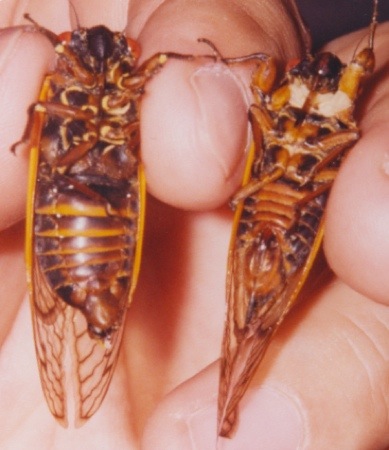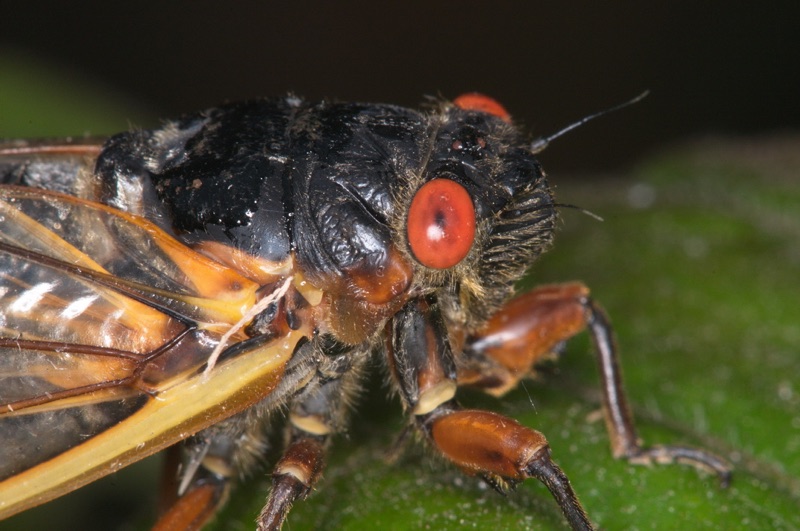Stop the killing of cicadas! Help us fight back!

John Cooley of Cicadas @ UCONN let me know that The Home Depot has large Ortho stands that advocate the destruction of periodical cicadas. Here is his tweet on the topic.
This is the Ortho Display at Home Depot.Please do your best to contact Home Depot and Ortho, and encourage them… fb.me/V0m4UCZa
— Team Cicada (@Magicicada1317) June 3, 2013
I went to Lowes to check there as well and they had Sevin brand pesticides with hangtags that specifically mention cicadas. When I saw that in person it took all my willpower not to flip out and make a scene.
How can we stop these companies from advocating the destruction of cicadas? We can call, Tweet, and leave posts on their Facebook pages.
- @HomeDepot on Twitter.
- Home Depot on Twitter
- @Lowes on Twitter.
- Lowes on Facebook
Call your local store and demand they remove signage that advocates the destruction of cicadas. Go to their websites, find their contact us pages, and call and email them.
If you see such displays in other stores, let them know how you feel as well. I will personally boycott these stores and sell any stock I have related to them.
Reasons why destroying cicadas is ridiculous:
Cicadas @ UCONN has a periodical cicada FAQ that features compelling reasons not to destroy these animals.
Here are my reasons:
- How often does an event occur that is as strange, sublime, and fascinating as a periodical cicada emergence? Very rarely. Maybe when a comet arrives. Four or five times in a lifetime, at most.
- You don’t want to rob future generations of the experience of a periodical cicada emergence, do you? You want your grandchildren and great-grandchildren to be able to experience these amazing creatures.
- Urbanization and other stresses are already shrinking Magicicada broods. Why accelerate their demise? Do you want the periodical cicadas to have the same fate as the dodo or passenger pigeon?
- It’s unpatriotic to kill periodical cicadas. Why? They’re only located in the U.S.A. They should be the official insect of the United States of America.
- Pesticides can cause collateral damage to other insect species like honey bees. Like to eat fruit? How about honey? Well, good luck if you help contribute to the acceleration of the death of honey bees. Read more about this topic. I think it would be ironic if a farmer sprayed to kill cicadas, but killed the pollinating insects as well.
- Can cicadas damage or kill small and fruiting trees? I’ve never seen it happen, but it is possible. Did you know that you can net these trees instead of drenching your neighborhood with pesticides? You can. The Magicicada FAQ has a picture of the netting.
- Pets and people love to eat cicadas. Do you want to poison your pets and kids when they eat a cicada treated with pesticide? I hope not.
- Probably the worst part about a periodical cicada emergence is cleaning up their rotting corpses. If The Home Depot and Lowes were smart, they would be selling Shop Vacs instead of chemicals.
- Using pesticides won’t help reduce the amount of time you have to spend cleaning them up. The corpses will pile up either way.
- Cicadas don’t eat fruit and vegetables. Unlike other insects, cicadas lack the mouthparts to chew vegetable matter. Unlike a caterpillar or grasshopper, they won’t eat your tomatoes or other garden vegetables.
I can go on and on…
Please help. Use social media to voice your disgust. Call your local store to ask them to take down anti-cicada signage.
































